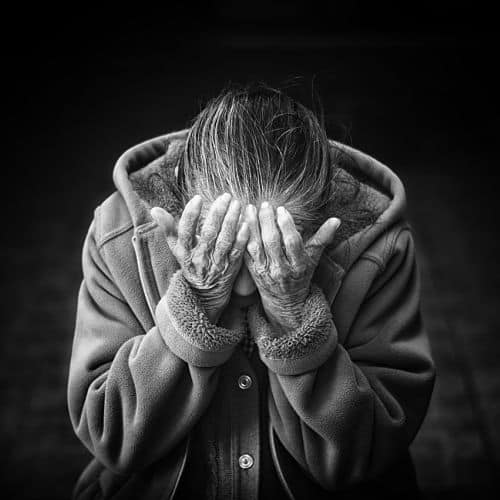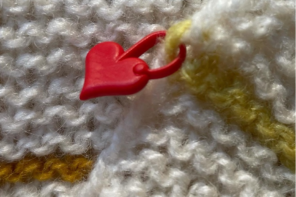It’s really bad with him. There are metastases in his head. He can stay at home tonight, and tomorrow night he has to go back to hospital. We have to be prepared for the worst. I am devastated. – WhatsApp message received 24 May 2015
It is in the late evening that I receive this message. It is sent by the wife of one of my “kind-of-colleagues” at my field-site. I have been conducting fieldwork at a care facility in the Netherlands since 2011, and the text message concerns one of the staff members of the welfare team. It is in this team that I participate as part of my fieldwork. We have known each other for a little over a year.
The text message is the first of many in which the process of bodily deterioration that characterizes ageing and that I have been studying over the past five years hits home.
In the events that ensued, I became primarily participant, and both researcher and subject of long term care arrangements. Being both emerged in and observant of topics of research is not something novel to anthropologists. At first, I thought I would refrain from analysing the onset and the ensuing events, but becoming so involved in it I realised that perhaps I would not, and should not, escape from analysing this. I felt this way because it allowed for an experience as near as one could get, a phenomenological endeavour that I would not be able to embark upon if not for the experience of the feelings of (mis)fortune that we shared in the process.
I received that very first message with disbelief and sent this in exact wordings back “unbelievable” was my reply to the WhatsApp message. After that, I quickly exchanged messages with one of the other team members about what was happening. Both of us felt the metastases were probably “disastrous” and this would not end well. We had been concerned about our colleague for a while already; he had shown strange behaviour and signs of disorientation and confusion. I did not think much of that behaviour before, but my other colleague did. And it seemed her intuition was right after all. Both of us felt dispirited by this news and experienced it as a larger misfortune than we could have imagined.
They had great difficulty to come to the correct diagnosis, but they are not metastases. He has had several CVAs […]. We were very relieved, but the doctors emphasize that this is pretty serious. We were, however, so scared that we find this better news.
WhatsApp message received 28 May 2015
My response to this message was similar to how she formulated their feelings (relief), and I sent back that I actually also thought it was “good fortune”, and definitely better than the first diagnosis. After all, all diagnoses would be better than the verdict of terminal disease he had received 4 days earlier. My exact wordings were “good fortune” and looking back now, I can still sense the relief I felt. At the same time, I realize, as my colleague and his wife did, that I only felt this was fortunate relative to the earlier misfortune that we were confronted with. The search for a diagnosis revolved around the question that Susan Whyte (1997) has distinguished in her work on misfortune.
When someone is confronted with misfortune, we ask: “What is the matter?” The answer to this question in this case turned out to be tentative and it shows that the extent and idea of misfortune is relative to the uncertain answers that are given to this in the process.
After the first weeks, the effects of the CVAs and the treatment he needed became clearer. After four weeks, my colleague was in a revalidation centre. Initially for three weeks and the first evaluation I received was that it was “a nice shelter”. After a while he became somewhat sad, mainly because of the confrontation with the damage that had been done by the CVAs. Again, we felt that this damage was bad luck. After all the extent of damage of a CVA is unpredictable. At the same time, my colleague and his wife started looking into what the actual cause of this was.
The question “what is the matter” turned into the follow-up question, “why is this happening?”, a quest for security (Whyte 1997), a sense of reasoning that would help us to explain.
At first we thought of the CVAs as something that could happen in the ageing process. After all, my colleague was perhaps not the healthiest – he did little exercise and enjoyed food – and relying on a biomedical rationale of bodily decline it felt like the natural course of things. It can happen, I did not question this, we discussed and we normalized the misfortune as part of the life course. His wife felt somewhat different and continued her search for security. Her main reason for doing so was the lingering feeling of insecurity, phrased in questions such as “could this happen again?” she doubted whether it was really part of the “natural” life course. Her search, I reflect now, was also partly given in by the fact that such a naturalisation would create great insecurities and a continuous anticipation of what may come next. I had underestimated the effect of this naturalisation, and I realised that such a normalisation in fact creates unclear expectations and boundaries, even more so because the approach towards ageing, especially in the idiom of biomedicine, is one of acceptance, inescapability, resignation. If it’s normal to experience random, stochastic, symptoms, and the aetiology a cascade of simply living, than the actual effects – such as CVAs – are neither fortunate nor misfortunate. However, for the individual experiencing ageing, unsurprisingly, such an approach results in a continuous feeling that bad events may be around the corner.
It was only about 6 months later that they figured out what it was, a specific and rare autoimmune disease. It felt like ill luck yet again. The wife of my colleague did background research and I also read up. We both concluded, bad luck yet again. The disease had nothing to do with the natural course of things that happened during the ageing process. There was nothing he could have done; there was nobody to be blamed. In addition, it was pretty well treatable, in that sense it was good fortune again. The diagnosis and treatment indeed brought a sense of security.
The biomedical idiom in which it was set helped to answer questions on what and why, and therewith provided more security than the idea of a natural physical decline during the ageing process.
It was a demarcated, a contained disease and not an insecure process of decline of which one did not know the beginning or the end, of which we were uncertain whether it was normal or abnormal. Looking closely at how we oscillated between (mis)fortune we ended in a sense of being fortunate, but only because we had felt a sense of security in that there was initially no cure, no future, and there was little we could have done to prevent it from happening. Given the found explanation, we did not consider the (mis)fortune legitimate, deserved, nor illegitimate or undeserved, we did not see a distribution of fortune in it (Weber 1993). We used a biomedical framework to explain what was happening and we stuck to this idiom in making sense of the (mis)fortune we experienced.
The tentativeness of (mis)fortune that this ethnographic anecdote sketches questions fortune or misfortune as something that can be distributed, as an absolute event. Instead, (mis)fortune seems experienced relative to the tentative situations in which we find answers that we give to questions raised by feelings of insecurity. Studying the literature on misfortune one notices that it is often part of an examination of suffering, in which at the center of attention are those that are disenfranchised; a focus we often find in anthropology and especially in medical anthropology. Perhaps our moral compasses and our commitment to the informants with whom we work guide us to focus on misfortune, on the suffering that we find in the field sites, on “dark anthropology” (Ortner 2016). But it might well be that the “suffering subject” became the topic of so many anthropological studies because it provided “[…] a solution to a problem that had in the 1980s appeared ready to condemn their discipline to irrelevance” as Joel Robbins (2013:454) suggests. Although the anthropology of suffering is not to be neglected, nor do I wish to deemphasize its importance, I do propose that the focus on suffering may have eluded our holistic lenses.
And in line with Robbins and Ortner, we have to complement this and view misfortune not as a singular incident, an event of bad luck, but in relationship with its ongoing embedding in everyday life and (re-)conceptualization of fortune, especially considering that fortune and misfortune are continuously mutually implicated in the ageing process.
And moreover, in the retrospective reasoning in which we in anthropology often deal with the two become intertwined. The tentative answers that were given in this brief ethnographic sketch show that even a clear biomedical idiom of ageing as a natural, declining process results in practice to insecurity produced by unclear boundaries. The biomedical idea of ageing as decline provides a tale of failure of the body that hides the unclear expectations that come with this. This concerns mainly the situatedness of (mis)fortune, which is often neglected when we look at single events as these are often treated as either misfortune or fortune. This does not seem to resonate with the ongoing and continuous re-interpretation of situations of (mis)fortune.
References
Ortner, Sherry B.
2016 Dark Anthropology and Its Others: Theory since the Eighties. HAU: Journal of Ethnographic Theory 6(1): 47–73.
Robbins, Joel
2013 Beyond the Suffering Subject: Toward an Anthropology of the Good: Beyond the Suffering Subject. Journal of the Royal Anthropological Institute 19(3): 447–462.
Weber, Max
1993 The Sociology of Religion. Beacon Press.
Whyte, Susan Reynolds
1997 Questioning Misfortune: The Pragmatics of Uncertainty in Eastern Uganda. Cambridge Studies in Medical Anthropology, 4. Cambridge; New York: Cambridge University Press.
This post was republished on Aug. 9th, 2020.










